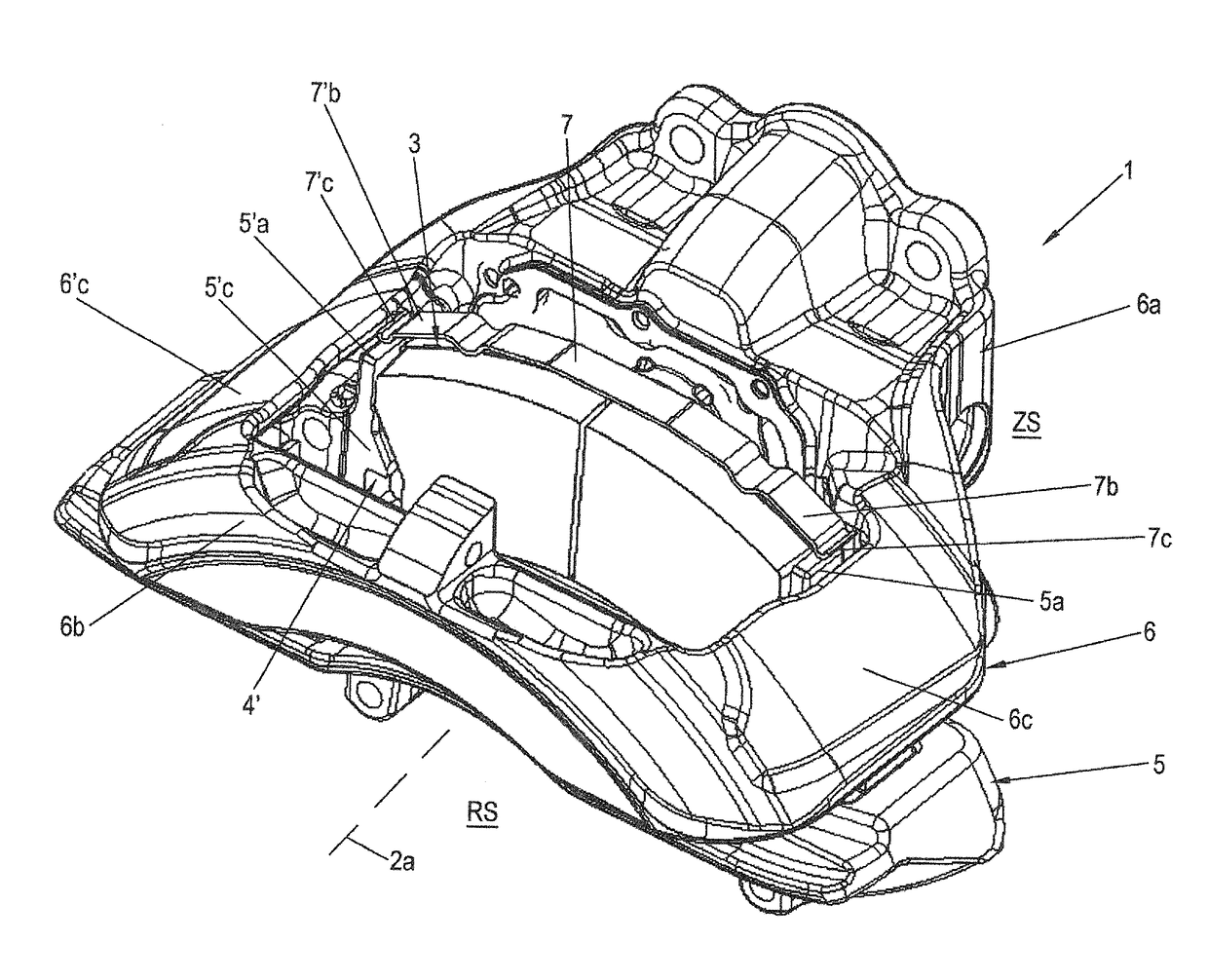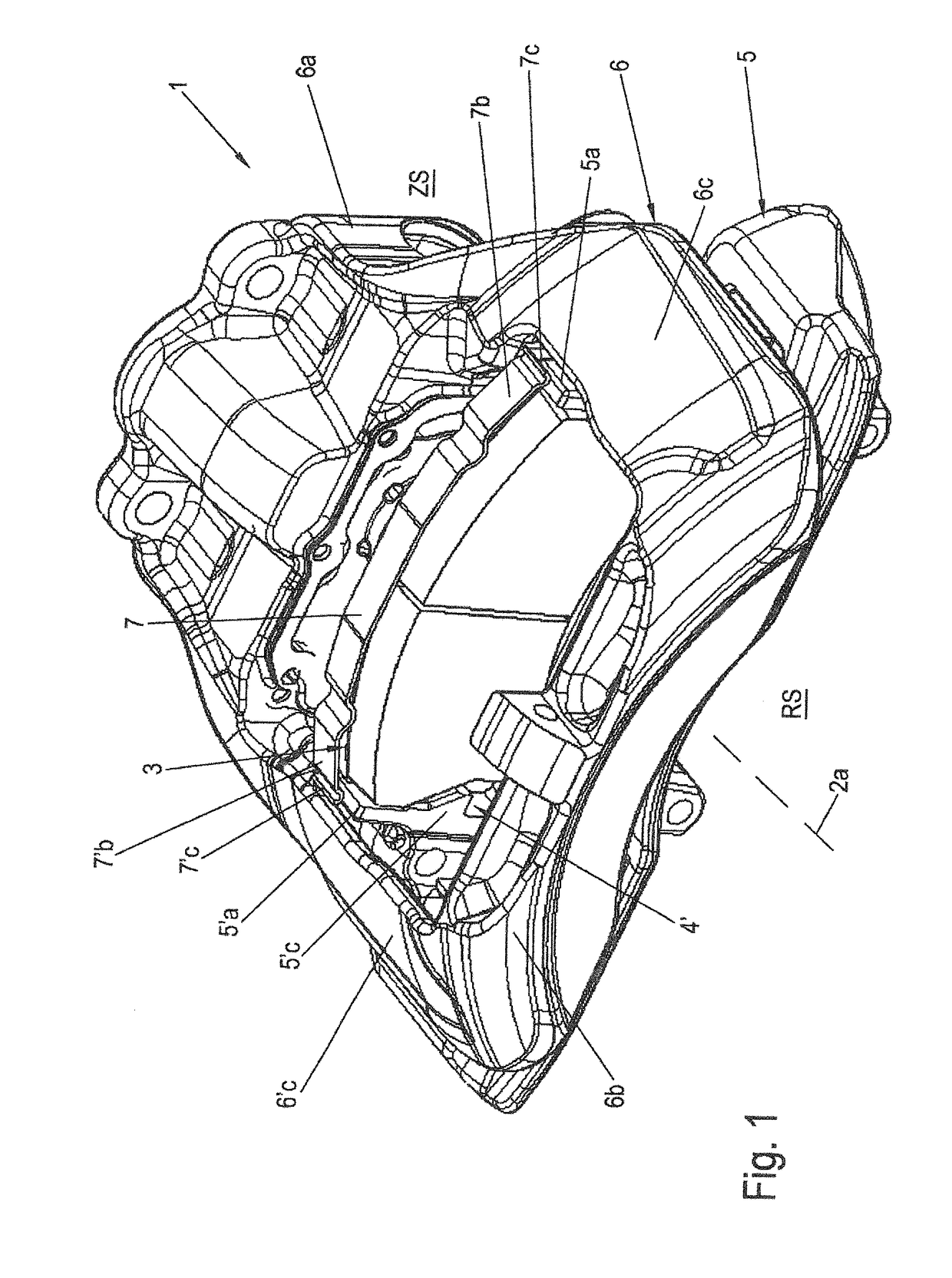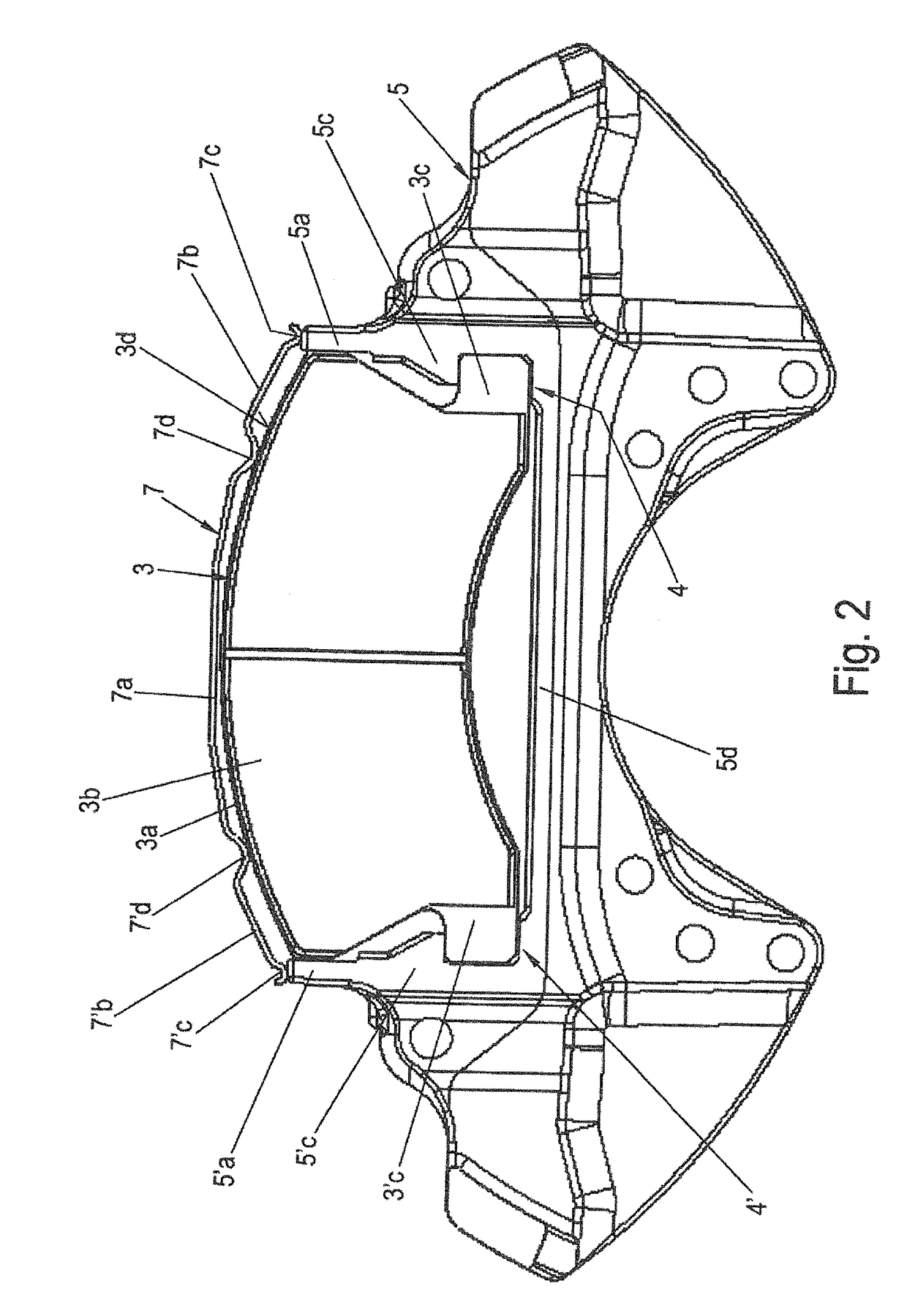Disc Brake and Brake Pad Set
a technology of disc brakes and brake pads, applied in the direction of axially engaging brakes, brake types, braking elements, etc., can solve the problem of even wear on the brake pads, and achieve the effect of preventing rotational movement of the brake pads and compact design
- Summary
- Abstract
- Description
- Claims
- Application Information
AI Technical Summary
Benefits of technology
Problems solved by technology
Method used
Image
Examples
first embodiment
[0092]FIG. 1 shows a schematic perspective view of a disc brake 1 according to the invention, for example, a pneumatic disc brake 1. Schematic partial views of a brake carrier 5 of the disc brake 1 according to the invention, as shown in FIG. 1, can be seen in FIGS. 2 through 4 with a brake pad 3 according to the invention. FIG. 1 does not show a brake disc 2 for the sake of simplicity, but it can be imagined easily by reference to FIG. 9. FIG. 2 shows a top view of a friction lining 3b of the brake pad 3 in a brake carrier 5. FIG. 3 shows forces 11, 12 acting on brake pad 3. FIG. 4 shows an enlarged diagram of one side of the brake pad 3 engaged with a brake carrier horn 5′a.
[0093]The disc brake 1 is part of the brake system of a vehicle, for example, in particular a commercial vehicle, and comprises the brake disc 2 with an axis of rotation 2a of the brake disc and two brake pads 3 arranged on both sides of the brake disc 2. Of the two brake pads 3, only one so-called clamping-si...
third embodiment
[0141]In this third embodiment, the pad retaining spring 7 comprises a central section 7a, arms 7b, 7′b, pressure sections 7c, 7′c and intermediate sections 7e, 7′e.
[0142]The central section 7a is provided with a slot 7f running in the longitudinal direction of the pad retaining spring 7 to receive a section of a fastening element 20. The slot 7f does not run in an imaginary central line of the pad retaining spring 7 but instead runs with an offset in the direction toward the friction lining 3b and parallel to the imaginary central line of the pad retaining spring 7. This imaginary central line runs in the longitudinal direction of the pad retaining spring 7.
[0143]In contrast with the first embodiment, the length of the central section 7a corresponds to approximately one-half the length of the central section 7a of the pad retaining spring 7 of the first embodiment.
[0144]An arm 7b, Tb is mounted at each end of the central section 7a. The arms 7b, 7′b are much longer in contrast wit...
fifth embodiment
[0163]FIG. 21 shows a schematic partial view of the disc brake 1 according to the invention from the direction of the clamping side ZS toward the activating side 3j of the brake pad 3 on the clamping side.
[0164]FIGS. 22-25 show enlarged schematic partial views of the fifth embodiment of the disc brake according to the invention, as shown in FIG. 21. Thus, FIG. 22 shows a central upper section of the pad rear plate 3a with a retainer for the pad retaining spring 7. FIG. 23 shows one end on the inlet side of the pad retaining spring 7 like that in FIG. 4, for example. Finally, FIG. 24 shows the end according to FIG. 23 on the inlet side in a view from the top.
[0165]In this fifth embodiment, the components of the disc brake 1 are the same as those in the third embodiment (FIG. 12) except for the brake pad 3 and the pad retaining spring 7. Therefore, only the differences in the brake pad 3 and the respective pad retaining spring 7 are discussed further here.
[0166]In contrast with the fi...
PUM
 Login to View More
Login to View More Abstract
Description
Claims
Application Information
 Login to View More
Login to View More - R&D
- Intellectual Property
- Life Sciences
- Materials
- Tech Scout
- Unparalleled Data Quality
- Higher Quality Content
- 60% Fewer Hallucinations
Browse by: Latest US Patents, China's latest patents, Technical Efficacy Thesaurus, Application Domain, Technology Topic, Popular Technical Reports.
© 2025 PatSnap. All rights reserved.Legal|Privacy policy|Modern Slavery Act Transparency Statement|Sitemap|About US| Contact US: help@patsnap.com



